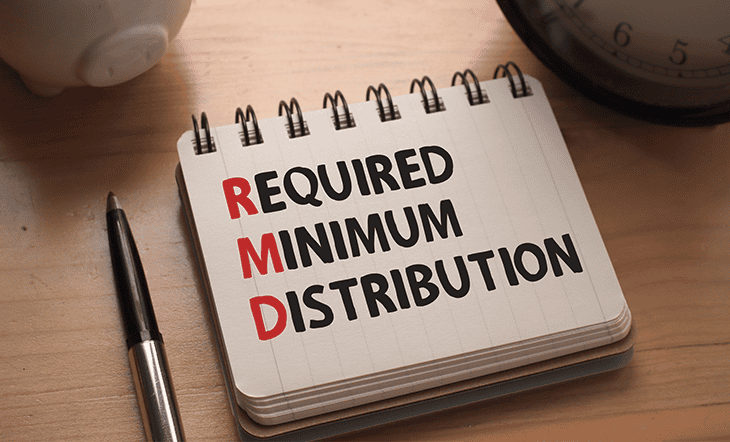Home > Retirement > Six Expenses That Are Making Retirement More Expensive
Six Expenses That Are Making Retirement More Expensive
Many people assume that expenses usually reduce in retirement. However, although expenses like fuel, dining, work wardrobe, and more fall as you approach retirement, you tend to spend more money on healthcare, leisure, insurance, travel, etc. Generally, as a result, overall retirement expenses rise between 2% and 4% per year. This becomes challenging if one’s retirement income is fixed and retirees have a retirement span of more than 10-15 years. According to the latest Consumer Expenditure Survey, the average annual household retirement spending for a 65-year old is $50,220. In contrast, the average normal household expenditure is $63,036, a significantly low difference compared to retirement household spending.
Further, with the increased lifespan of retirees (from 14 years to an average of 25 years) and the record-breaking inflation, retirement expenses are only expected to shoot up. As inflation hit a 40-year record high of 7.9% in February 2022, most retirees grew concerned if their retirement corpus would be sufficient to maintain their living standards. According to financial experts, a person earning $40,000 annually in pension will lose at least 25% of this value (in real dollar terms) within three years, given the present inflation rate. The current COVID-19 pandemic is one of the prime contributors to the sharp inflation rates. Inflation has become a growing concern for retirees because it strains their overall budget, forcing them to trim even basic expenses, such as groceries, medical costs, gas, housing costs, entertainment, and more.
Even with the Social Security benefits in place, maintaining the pre-retirement living standard is becoming a challenge for a majority of the retirees, especially those dependent on a fixed income (pension + Social Security benefits + Retirement account withdrawals). If you need help to create a strategy that can allow you to live comfortably in retirement by either generating a new income stream or designing a new budget to help manage your monthly retirement expenses, consult with a professional financial advisor who can guide you on the same.
If you are planning your retirement or approaching it soon, take note of these expenses that are likely to make your retirement more expensive:
Table of Contents
1. Housing:
One of the primefactors that can impact retirement living expenses is the housing cost. Housing refers to mortgage, rent, taxes, insurance, maintenance, and repairs. According to a report, the average retiree household spends about $17,472 annually on housing costs. This is nearly 35% of their total annual expenditure. On the contrary, normal U.S households spend $20,679 annually on their housing expenses, 33% of their total yearly expenses. Another report by Harvard’s Joint Center for Housing Studies states that one in every four people aged 80 and above is still paying a mortgage. 46% of homeowners between 65 and 79 years are paying off their mortgage. If you compare these numbers with the 1990 figures, the aversion toward debt in Americans has staggeringly declined. In 1990, only 34% of people between 65 and 79 were paying off mortgages, and 3% of those above 80 had mortgages. You can consider paying off your home loan before quitting your job. Keeping your loans pending for the future might result in a higher interest burden. Also, you would spend a share of your retirement reserve to repay your debt. This impacts your financial security in retirement. Another strategy to reduce your housing cost is to minimize your living expenses. You can also compare cities’ cost of living and consider relocating to a more budget-friendly city during your non-working years. The cost of living difference in cities is much more real than you might think. For instance, Hamilton is one of the most expensive cities with a cost of living index as high as 170.18, rent index of 99.93, and groceries index of 175.07. In contrast, the cost of living in San Francisco is cheaper than in Hamilton, with a cost of living index of 96.59, rent index of 89.54, and groceries index of 103.91. However, if you can choose, other cities like Seattle, Tampa, Chicago, Atlanta, Cleveland, etc., rank even lower in the cost of living comparison.
2. Transportation:
Even though your commuting expenses to work are likely to fall during retirement years, your transportation costs in other areas will significantly increase. In general, an average retiree household spends about $624 a month ($7,492 annually) in transportation expenses. This figure is not much less than the $895 ($10,742 annually) a month spent by a normal U.S household on transportation. Transportation costs go up even if you live in a car-dependent suburban area or a rural region. If you have to commute frequently to the market to get your necessities, your transportation expenses will climb even if you are not traveling to work every day. Hence, even when you compare cities’ cost of living, assess how much transportation costs would you be incurring. If the cost of living comparison shows that the city is low on housing costs and saves on transportation expenses, you could sincerely consider relocating to a budget-friendly city. Alternatively, try to switch to electric vehicles or take public transportation for commuting to well-connected areas. If you do not have a daily need for a car, you could choose budget-friendly cab services over buying a car. This will save gas costs, car maintenance, car loan interest, and insurance costs.
3. Healthcare:
Medical expenses are likely to climb as you grow older. Healthcare expenses comprise your medical supplies, doctor visits, drugs, and more. On average, a retiree spends about $6,833 annually on healthcare expenses, which is as high as $569 per month. In contrast, an average American household contributes $5,193 towards healthcare and related costs. The healthcare spending for a retiree is expected to further go up with their age because of the long-term care expenses, which at least 70% of the retirees (aged 65 years) would need in the later years of their life. A smart strategy to reduce your retirement medical expenses is by investing in the right health insurance plan. For starters, have an in-depth understanding of Medicaid plans offered by the Federal government. Medicare consists of four plans – A, B, C, and D. Medicare Plan A – offers hospital coverage, Plan B – gives limited medical coverage, Part C – includes Medicare advantages (sold by private companies), and Medicare Part D – covers specific prescription drugs. Medicare Part A is free for everyone who contributes towards Medicare for ten years or more through their payroll taxes. For others parts, you are liable to pay premiums to get coverage. However, Medicare plans have limited coverage and require you to pay some out-of-pocket expenses. Hence, it is critical that you understand what each Medicare plan entails, what your options are, and how much you are likely to pay from your pocket. You could consider getting a private health insurance policy early in life to reduce your future medical costs. It is beneficial to opt for a long-term care plan that you might need in the years to come. Apart from this, preventive care steps, such as regular physical exercise, eating a healthy diet, etc., can help you stay healthy and potentially save more on healthcare costs, especially prescription drugs.
SPONSORED WISERADVISOR

Choosing the right financial advisor is daunting, especially when there are thousands of financial advisors near you. We make it easy by matching you to vetted advisors that meet your unique needs. Matched advisors are all registered with FINRA/SEC. Click to compare vetted advisors now.
Utilities, such as gas, electricity, water, phone bills, internet, etc., consume a major chunk of your retirement portfolio. According to the latest Consumer Expenditure Survey by the U.S. Bureau of Labor Statistics, retiree households spend nearly $3,810 annually on utilities. This is only slightly less than $4,055, the annual spend of an average American household. If you want to reduce your utility bills, you can go for more energy-efficient options (such as LED bulbs), save on your water consumption, lower your phone calls, hang your sheets and towels instead of drying them, and wash clothes in cold water, and more. You could also get a programmable thermostat to maintain a specific temperature at home while turning down your water heater, room heater, etc. You can, if possible, go easy on your internet consumption. There are several other ways to minimize your utility bill during retirement. The inflation rate for utilities and related services has nearly crossed the 23.8% mark in February 2022, raising alarms for retirement planners. AARP lists down 13 ways to save on your utility bill during retirement.
5. Food:
A significant component that is making retirement more expensive is food. An average retiree household spends $6,599 ($550 per month) annually on food. In contrast, a general household spends about $8,169 annually ($681 per month). Nearly 40% of these expenses in a retirement household are towards dining out. With food prices expected to go up between 2.5% and 3.5% in 2022, the total outlay for retirees in the food space will go up even higher. Even in terms of home groceries, you will notice a general increase in everyday food item prices. Beef prices are nearly 43.9% higher compared to what they were in January 2021. However, with some changes in your food habits, it is possible to keep your food costs low in the present and even during retirement. When you visit the grocery store, check the prices of different items before you put them in your grocery basket. Consider switching to cheaper food alternatives – if the price of beef is climbing up, consider eating chicken regularly and buying beef occasionally. You can also choose a grocery store that offers the most discounts or gives you coupons to avail on your next purchase. An important step is to make a grocery list and stick to your list when shopping. Take advantage of senior citizen discounts or other mediums like credit card bonus points. When dining out, try to choose restaurants that are nice and budget-friendly. If you are going out with friends, consider sticking to a budget. It is critical to find the balance between going out to eat and eating at home; the former is more likely to shoot your bills than the latter.
6. Entertainment:
As the prices of basic items, such as gas, water, electricity, food, etc., go up, entertainment becomes even more costly. Outings to a restaurant, traveling, visiting family or kids, and more consume a major chunk of your retirement budget. However, it is easy to curb these expenses. You could consider having a few of your friends come home to spend some time with you. You can also ask your family members to work on an alternate visit criterion rather than you traveling every time. In terms of dining out or going to a movie, you can do it but much less frequently than before. If you do travel, avoid eating all your meals out instead, you could take an option like an Airbnb with a kitchen, where you could cook a few meals and minimize your cost to dine out.When traveling, assess why hotels are so expensive – if certain hotels are pricier because of the location or the travel period, you could switch your flight tickets to a time that is more cost-friendly for traveling and has lower tariffs.Further, the cost of living difference between cities also impacts your entertainment budget. Hence, if you are relocating to a pocket-friendly city for retirement, factor in the entertainment costs of the city. If you have to travel a longer distance to reach a theater or a good restaurant, you would be spending more on fuel costs, which eventually washes off the money you save from tapping the cost of living difference.
Consider working part-time
With retirement expected to become more expensive, you could consider working part-time to keep pace with the rising retirement costs. You could follow and monetize a passion or hobby or opt for freelancing, etc. You can also work in your previous job in a limited capacity, if permissible. Alternatively, you have the option to delay your Social Security withdrawals and maximize your retirement account contributions to boost your long-term retirement savings.
To summarize
These are six of the top retirement expenses that can potentially make your golden years more expensive, causing you to rethink your retirement planning strategies. Apart from these aspects, you would also be paying taxes during retirement, which is further likely to burden your savings. Even if you have financial support from Social Security benefits or pension payments, the money you need to spend for a financially secure retirement will probably be much higher than anticipated in the accumulation phase.
Therefore, it is critical that you understand your cost of living expenses and accordingly, accumulate a retirement corpus that can sustain the same standard of living during your non-working years. If you are closer to retirement, there is only so much you can do to boost your retirement reserve. However, in this case, you could keep your retirement expenses under strict control so that you do not outlive your retirement nest egg.
If you find this overwhelming or require expert guidance in budgeting, planning, and managing your retirement needs, you could engage with a professional financial advisor. These advisors have the experience and expertise to think through all retirement aspects and guide you through the entire retirement planning phase, ensuring that you are best prepared for retirement. Use Paladin Registry’s free advisor match tool and get matched with 1-3 qualified advisors who may be able to help you with your unique financial goals and requirements.
For further information on how you can plan ahead for your retirement using suitable retirement savings strategies for your unique financial needs, visit Dash Investments or email me directly at dash@dashinvestments.com.
About Dash Investments
Dash Investments is privately owned by Jonathan Dash and is an independent investment advisory firm, managing private client accounts for individuals and families across America. As a Registered Investment Advisor (RIA) firm with the SEC, they are fiduciaries who put clients’ interests ahead of everything else.
Dash Investments offers a full range of investment advisory and financial services, which are tailored to each client’s unique needs providing institutional-caliber money management services that are based upon a solid, proven research approach. Additionally, each client receives comprehensive financial planning to ensure they are moving toward their financial goals.
CEO & Chief Investment Officer Jonathan Dash has been covered in major business publications such as Barron’s, The Wall Street Journal, and The New York Times as a leader in the investment industry with a track record of creating value for his firm’s clients.
Other posts from Jonathan Dash
Things You Should Know About RMDs if You Are Turning 73
Retirement accounts like the 401(k) and the Individual Retirement Account (IRA) are broadly classified as traditional, and Roth based on their taxability....
Should You Keep Your Money with Your Employer’s 401(k) Plan After You Retire?
One critical financial decision looms large as you approach retirement - how does a 401(k) work when you retire?...
6 Reasons Your Retirement Plan Might Change and How to Prepare For it
Planning for retirement is an essential part of securing a financially stable future. It can help you live...




